Overhead, turkey vultures and hawks circle looking for prey. Underfoot, snakes, salamanders and turtle hatchlings do their best to stay hidden. All around, young trees — thousands of them — dot the landscape of what was once a rock quarry and is now part of a project to plant two billion trees across Canada.
“It’s been really cool to see the quarry transform over the last year and a half,” says Mary Beth Lynch, a resource conservation officer with Thousand Islands National Park, as butterflies and dragonflies flutter past her.
“It’s been beautiful to see the birds and all the other animals,” agrees resource conservation technician Ashley Strauss.
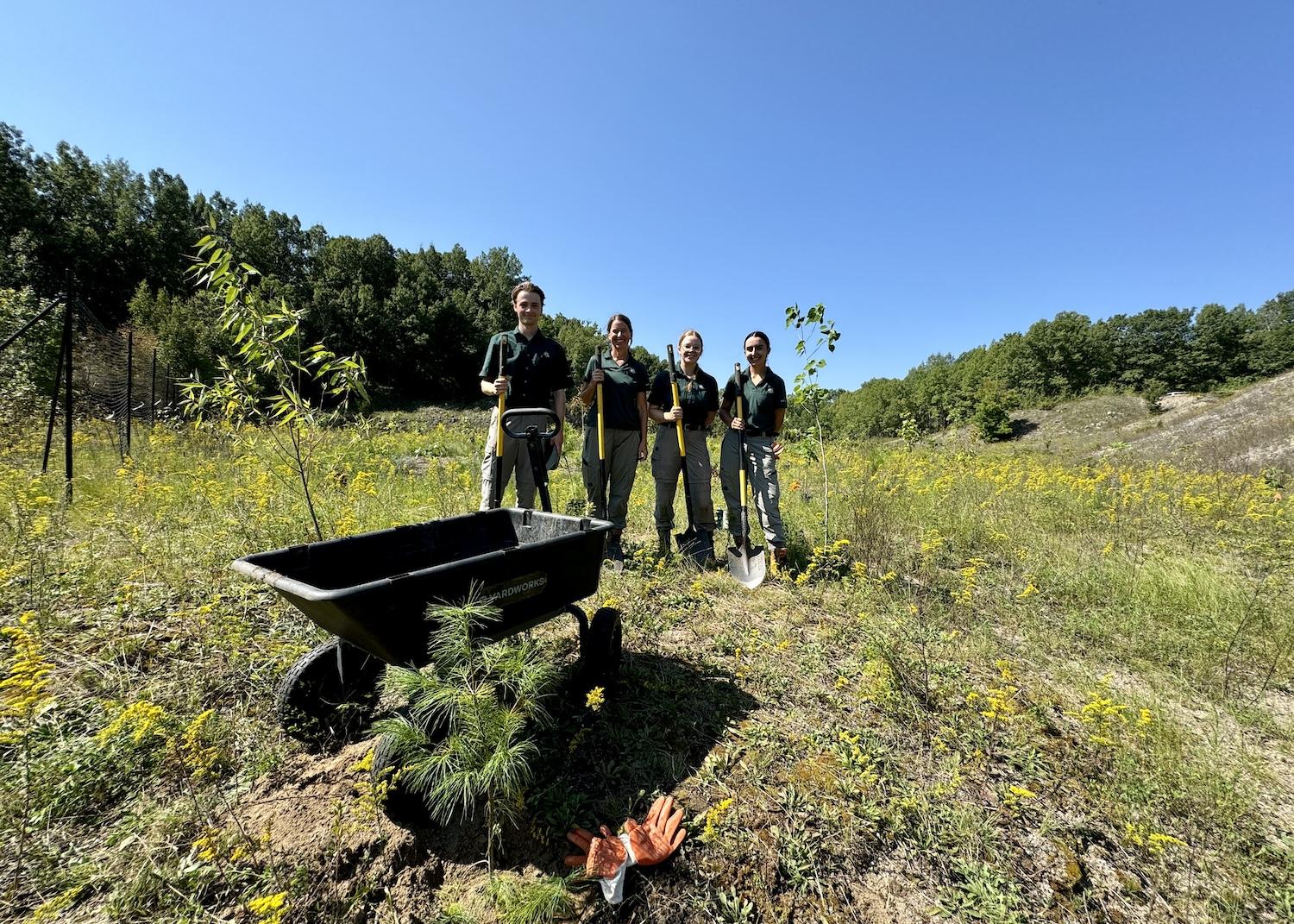
The Mending Ground project team — Ben Pelkey, coordinator Mary Beth Lynch, Ashley Strauss and Lauren Hart — is shown at the Hill Island quarry site/Jennifer Bain
I’ve joined them and two other Parks Canada summer staff at this southern Ontario park — just a bridge away from New York — to see how their Mending Ground project works and how it fits in with the federal 2 Billion Trees (2BT) program.
Canada has pledged to plant this staggering number of trees between 2021 and 2031 to tackle climate change and biodiversity loss. It hopes to exceed its 2030 Paris Agreement greenhouse gas emissions reduction target and establish the building blocks to get to net zero by 2050.
Up to $2.4 billion ($3.2 billion Canadian) will be invested in tree planting efforts led by provinces and territories as well as for-profit, not-for-profit and Indigenous organizations. These new trees are expected to capture and store carbon from the atmosphere, improve air and water quality, help to restore nature and biodiversity, cool urban centers and create and support thousands of green jobs.
More than 110 million trees — representing at least 220 species — have already been planted at more than 2,900 sites. This former quarry on Hill Island is one of those sites.
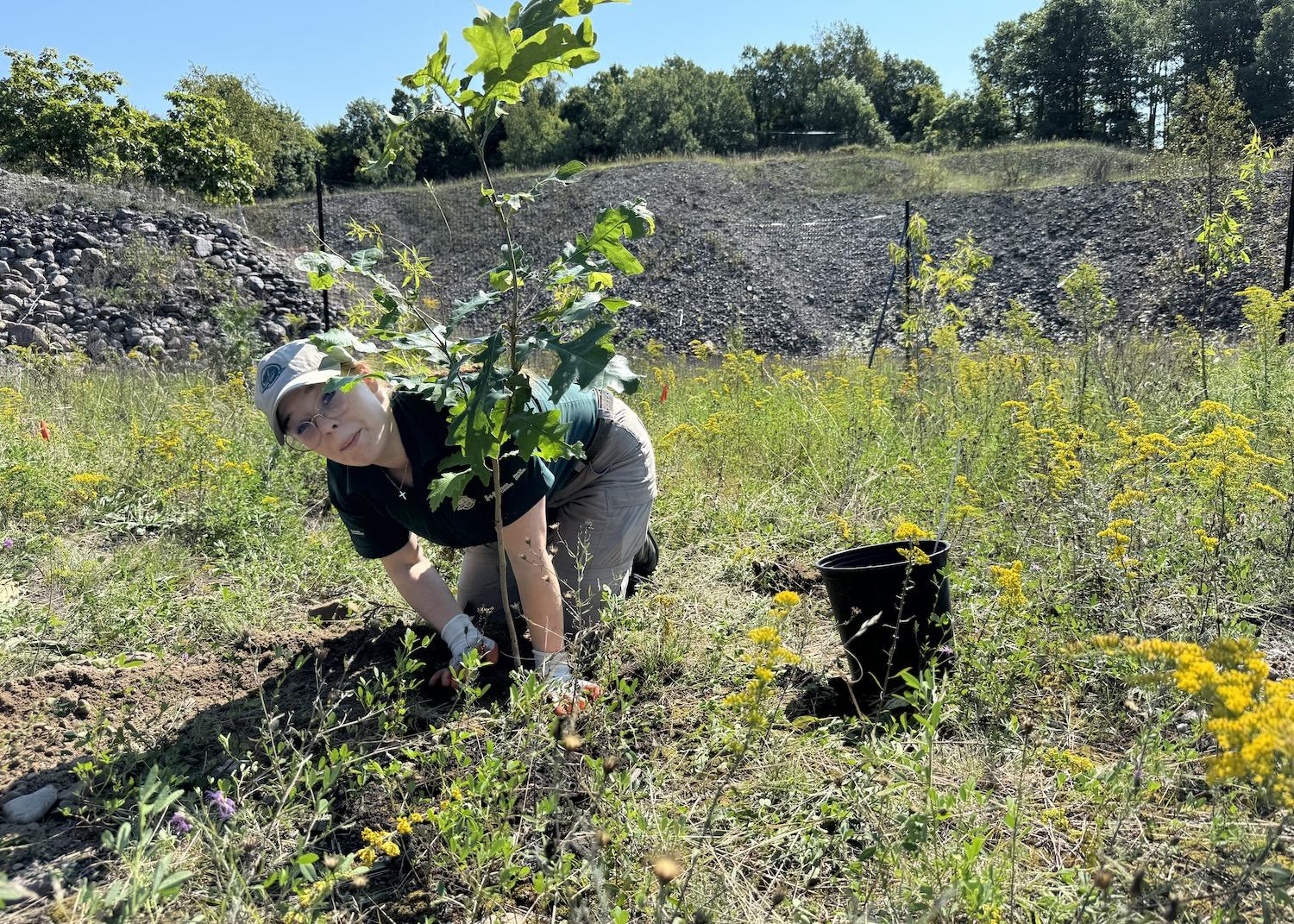
Parks Canada resource conservation technician Ashley Strauss plants a bur oak at the Hill Island quarry/Jennifer Bain
“We check that our pot fits into the hole, and then we will push on the pot, so that helps that we’re not damaging any of the roots or pulling them out and ripping them,” says Strauss as she demonstrates how to plant a potted bur oak. "So kind of like rolling dough before you pull it out of the container, it just will slide right out if you give it a little bit of pressure.”
The recent university grad pops the tree into a hole that she has just dug and makes sure the root collar is flush with the ground. She reaches for a pile of amendment and sprinkles it into the hole, then mixes it with the earth she has to return to the hole. She pats down the area around the tree to avoid air pockets that can lead to pooling water and root rot.
After tucking her tree “into bed,” so to speak, Strauss gently stomps on the ground around it. The oak has been pre-watered so it has a better chance of acclimatizing to its new home.

Planting trees must be done properly if the trees are to survive and thrive/Jennifer Bain
“We always give a demo when we have volunteer groups,” explains Lynch, the Mending Ground project coordinator. “It’s great to have the help, but if the trees aren’t planted properly, they’re not going to survive, so we really take the time to make sure.”
There is one final step.
“We always suggest you name your tree,” says Strauss. “Give it a name. Give it a couple of words of affirmation. As you know, positive words mean positive growth. It also allows people to bond with the site and bond with the trees and hopefully come back. I’ve come back and taken pictures of my legacy tree.”
So what should this bur oak be called? “The Traveler,” the women decide as a nod to National Parks Traveler.
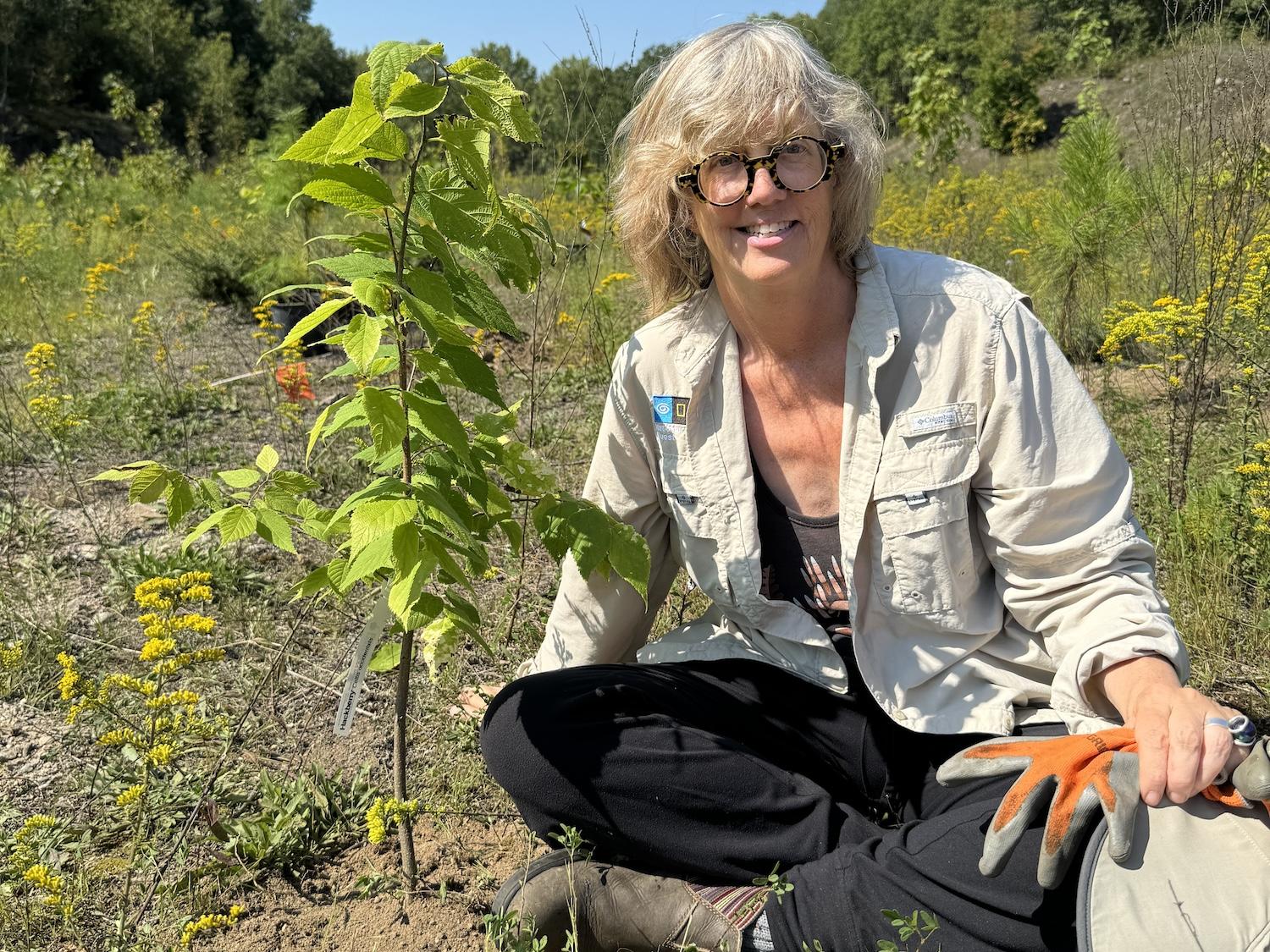
The Traveler's Jennifer Bain plants a hackberry at the Hill Island quarry/Mary Beth Lynch, Parks Canada
It’s September and my first visit to Thousand Islands even though I live less than four hours west of the park in Toronto. According to a 2022 management plan, some 15 million Canadians and 3.5 million Americans live within a three-hour drive of the park and more than 35,000 vehicles pass by it daily on Hwy. 401, but only 80,000 people stop to visit each year.
Extending across a 75-mile stretch along the St. Lawrence River and Lake Ontario from Brockville to Prince Edward County, Thousand Islands protects several mainland properties, 26 islands and 89 islets and shoals. While this is a boater’s paradise, there are visitor services in three mainland hubs along the Thousand Islands Parkway.
Thousand Islands is also a core protected area of the UNESCO Frontenac Arch Biosphere. It’s at the crossroads of the St. Lawrence River and the Frontenac Arch — where the islands created a land bridge over the river and around the great lakes for animal and bird migration — and is in the transition zone between Eastern Deciduous and Boreal Forests.

A scenic cruise through the Thousand Islands circles the U.S. island where Boldt Castle was built in the early 1900s by a hotel magnate for his beloved wife/Jennifer Bain
Like me, many visitors take scenic cruises out of Gananoque that cross into American waters and travel past opulent summer homes including Boldt Castle, built for Waldorf-Astoria hotel magnate George C. Boldt as a tribute to his wife Louise. Construction began in 1900, but when Louise died in 1904 just before it was finished, the castle sat vacant for more than 70 years. The Thousand Islands Bridge Authority now runs it as a tourist attraction.
After circling the Boldt Castle island and gawking at other lavish American cottages and a mobile park, my boat returns to Canadian waters where the cottages are modest and where I’m relieved to see Parks Canada keeping some islands pristine.
Back on shore, it’s fun to be able to drive to Hill Island. It’s on the Canadian side of the border but is part of a bridge system linking Ontario with New York through America’s Wellesley Island. Much of the island is under Parks Canada's care, but there are seasonal and year-round homes. The unmarked quarry site is near the 1000 Islands Tower.

A vintage shot of the Hill Island quarry from the 1970s/Parks Canada
Not much is known about the quarry, only that it was used for aggregate extraction before becoming part of the park in 1977. Some of the aggregate was apparently used to build Hwy. 401, a busy roadway that stretches across southern Ontario from Windsor to the Quebec border.
As Lynch explains, Parks Canada has done some small-scale tree planting here — just 100 or 200 trees at a time — over the last 15 years. But these plantings were heavily browsed by the island’s hyper-abundant white-tailed deer population.

Parks Canada drone footage of the Mending Ground site in July 2024 shows how the quarry has changed thanks to trees/Parks Canada
Staff started building test fence plots that are 65 feet by 65 feet and 7.5-feet tall. Now, with $440,000 ($600,000 Canadian) in 2BT funding for 2023 to 2025, Parks Canada has been able to install about 1.9 more miles of deer exclusion fences and pay for staff time to plant 15,000 seedlings and saplings by this fall. Spread over 12.5 acres, the fenced restoration zone has space between the fences so wildlife and people can pass. Another 3,000 pitch pine seedlings will be planted next year.
The cost of tree-planting initatives varies type on the type and species of tree stock planted. Tree costs range from $1 to $2 Canadian for bare-root plugs to $40 for larger potted stock. "Trees are tailored to local conditions and use a mix of native species, sometimes including species at risk, to plant in specific areas that will maximize ecological benefits," says Lynch. "As a result, our overall costs may be higher than some large-scale operations on private land but are within the normal range and produce a variety of benefits."

Mending Ground project coordinator Mary Beth Lynch stands with Ashley Strauss among potted trees ready to be planted at the Hill Island quarry site/Jennifer Bain
Thousand Islands is on traditional Haudenosaunee and Anishinaabe (Algonquin) lands and Parks Canada has a well-established relationship with the nearby Mohawk community of Akwesasne. So far, five fenced zones have been given Mohawk names that translate to Big Stone, Life Giver, Turtle Land, Where the Birds Soar and Where the Rat Snakes Sleep. Three more await names this fall.
The Mending Ground team — which includes resource conservation students Lauren Hart and Ben Pelkey — plants both seedlings and potted plants from local nurseries.
“One mission of 2BT is to have the right trees in the right places so you’re not just planting trees, they’re surviving and thriving,” stresses Lynch, who’s also a certified seed collector.
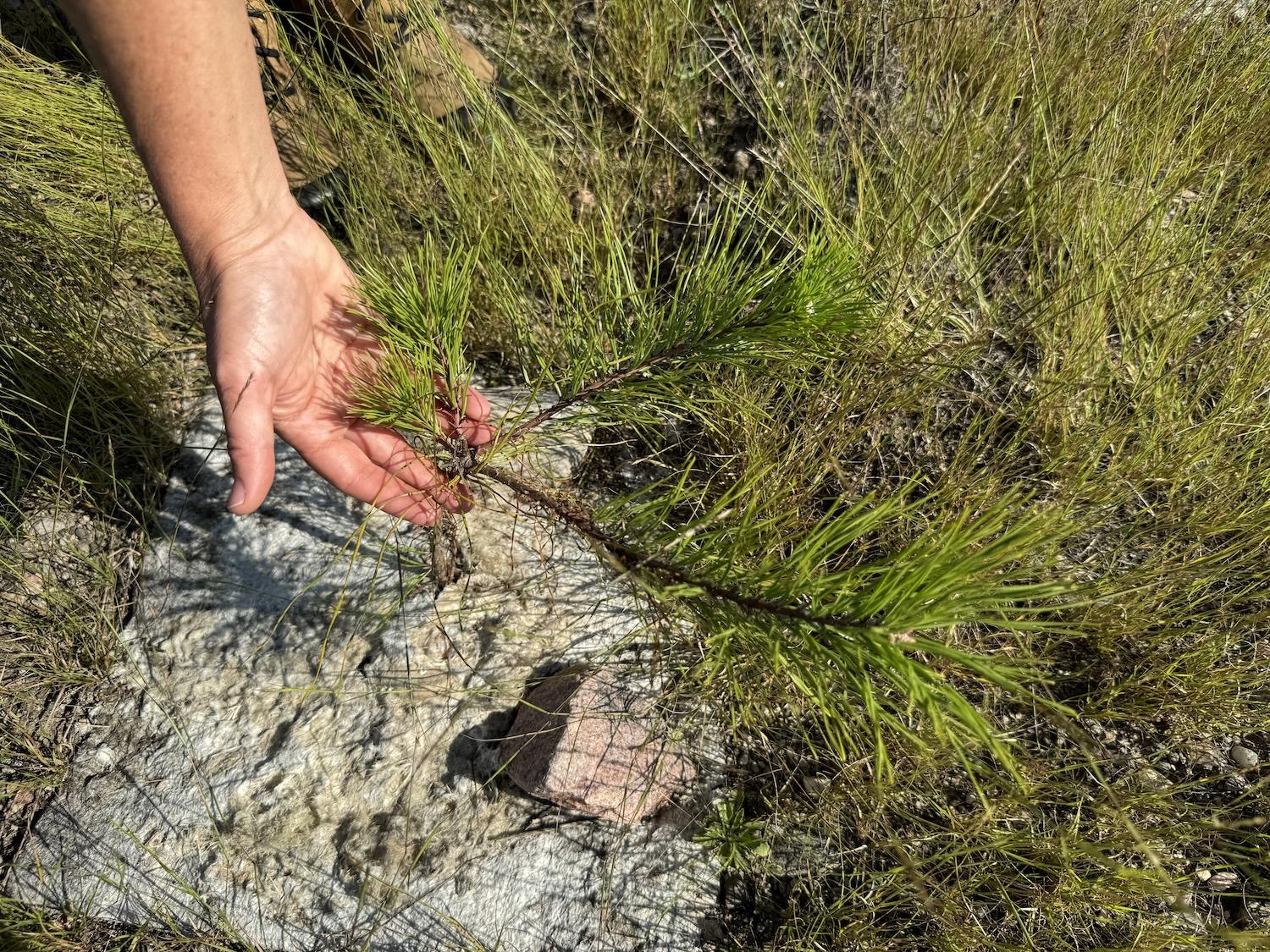
A hemp mat helps a young pitch pine retain moisture/Jennifer Bain
The “huge diversity of species” that they're planting includes pitch pine, red pine, white pine, hackberry, eastern hemlock, butternut, black walnut, bur oak, balsam poplar, peachleaf willow and butternit hickory.
So far they’ve planted 11,000 out of 18,000 trees planned for the quarry and removed invasive species including dog-strangling vine and garlic mustard. They plant from April to early June, and then from early September to the end of October.
Volunteers — individuals or groups — are always welcome. Hill island residents, environmental groups and student groups have already answered the call for help.

Deer exclosure fences that are 7.5-feet tall protect the new growth at the Hill Island quarry/Jennifer Bain
Home to 39 species at risk, Thousand Islands is considered one of Canada’s most biologically diverse parks. Parks Canada calls it “an exceptionally important north-south corridor for wildlife movement and gene flow.” It’s the only national park protecting species such as pitch pine, gray ratsnake, deerberry (a flowering plant) and pale-bellied frost lichen.
Found in a small area of eastern Ontario, pitch pine is the province’s only native conifer with needles bundled in groups of three. Needles and cones can sprout directly from the trunk. But fire suppression has caused this species to decline, and while prescribed fires do help it regenerate, so will the fact that about 20 per cent of the Mending Ground trees will be pitch pines.
“When we’re done with this project," says Lynch, "we hope to have one of the biggest populations in Ontario of pitch pine."
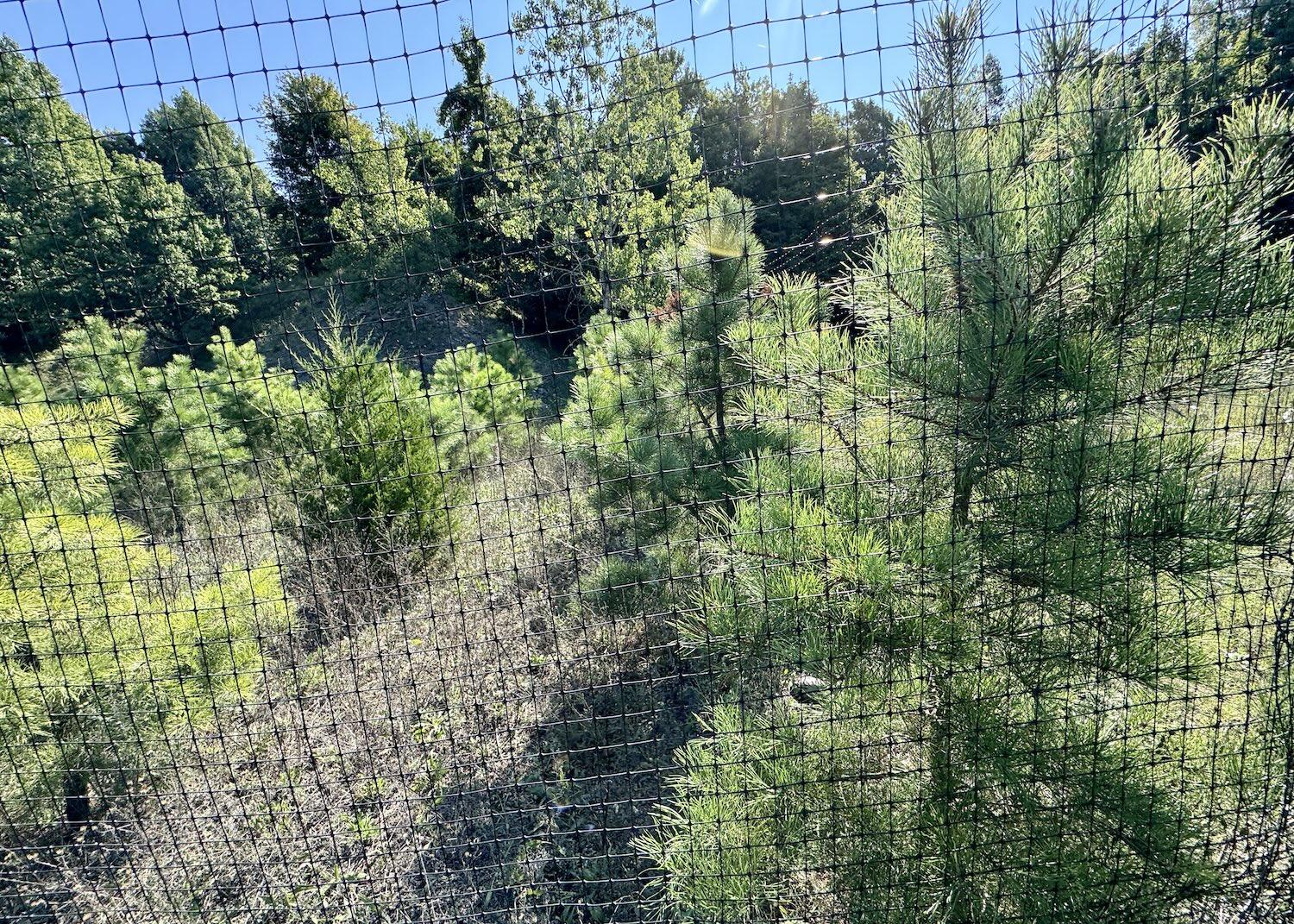
Peering through a deer exclosure fence, you can see how the protected trees are doing/Jennifer Bain
As we tour the site, I see how the once barren quarry slopes have been hydroseeded with native grasses and wildflower seeds, and how hemp mats help some seedlings retain moisture. There’s a fire hose that brings in water from over a hill and pine cones developing on some of the larger trees. A few trees are clearly suffering from “transplant shock” — showing discoloration and wilting leaves — but some mortality is to be expected. Once these trees grow to 6.5 feet, the deer fences can come down.
As Lynch surveys potted plants ready for planting, she says “these trees are going to be so excited to be in the ground after winter in the pots.”
The project name, Mending Ground, she explains, came about when they were applying for 2BT funding to restore the quarry. “It’s a hole in the landscape so we’re mediating it and restoring it with 18,000 trees.” They’ve made English and French stickers for the project and gift them to volunteers to help them stay excited about the trees they’ve planted.

At Thousand Islands National Park, Parks Canada staff create these nesting boxes to help turtle eggs safely hatch/Jennifer Bain
I take my turn helping out and plant a hackberry. As special as that hands-on moment is, I'm even more thrilled to spot a bird's nest in a young pitch pine and to almost see a baby turtle.
Thousand Islands has a Reptile and Amphibian Recovery and Education program. Staff collect map, painted and snapping turtle eggs that are vulnerable to predation and roadkill, incubate the eggs and release the baby turtles back into the wild. But when they discover nesting sites, they can create protective covers and then monitor them with wildlife cameras.
“Yesterday we saw two baby snappers,” says Lynch as she checks on multiple covered nests in the quarry.

I drove by this gray ratsnake, a threatened species, before catching site of it in my rear-view mirror/Jennifer Bain
We’re not so lucky, but walk carefully in case any hatchlings are making their way from the quarry to the river. Just before leaving, we do spot a garter snake between our cars and the outhouse. I grew up playing with garter snakes at my cottage, and as an ophiophilist am dying to see my first gray ratsnake, a threatened species that can reach more than eight feet long and is one of Canada’s largest snakes.
What are the chances of coming across this non-venonmous beauty that can only be found in two small areas in Ontario? Well at least I got to see the Parks Canada visitor center playground at Mallorytown Landing where kids are told that they're gray ratsnakes and the playground is their home so they should figure out where to hide from hawks, search for mice, warm up on a cold day and use their climbing abilities.
But as I leave the quarry on a gravel road, I spot something in my rear-view mirror that looks like a piece of blown-out tire. Backing up for a closer look, I realize it’s an elusive ratsnake and while it's not moving, it’s very much alive. We eye each other briefly before it slithers safely off the road, into the grass and perhaps over to the quarry to see how the new forest is coming along.
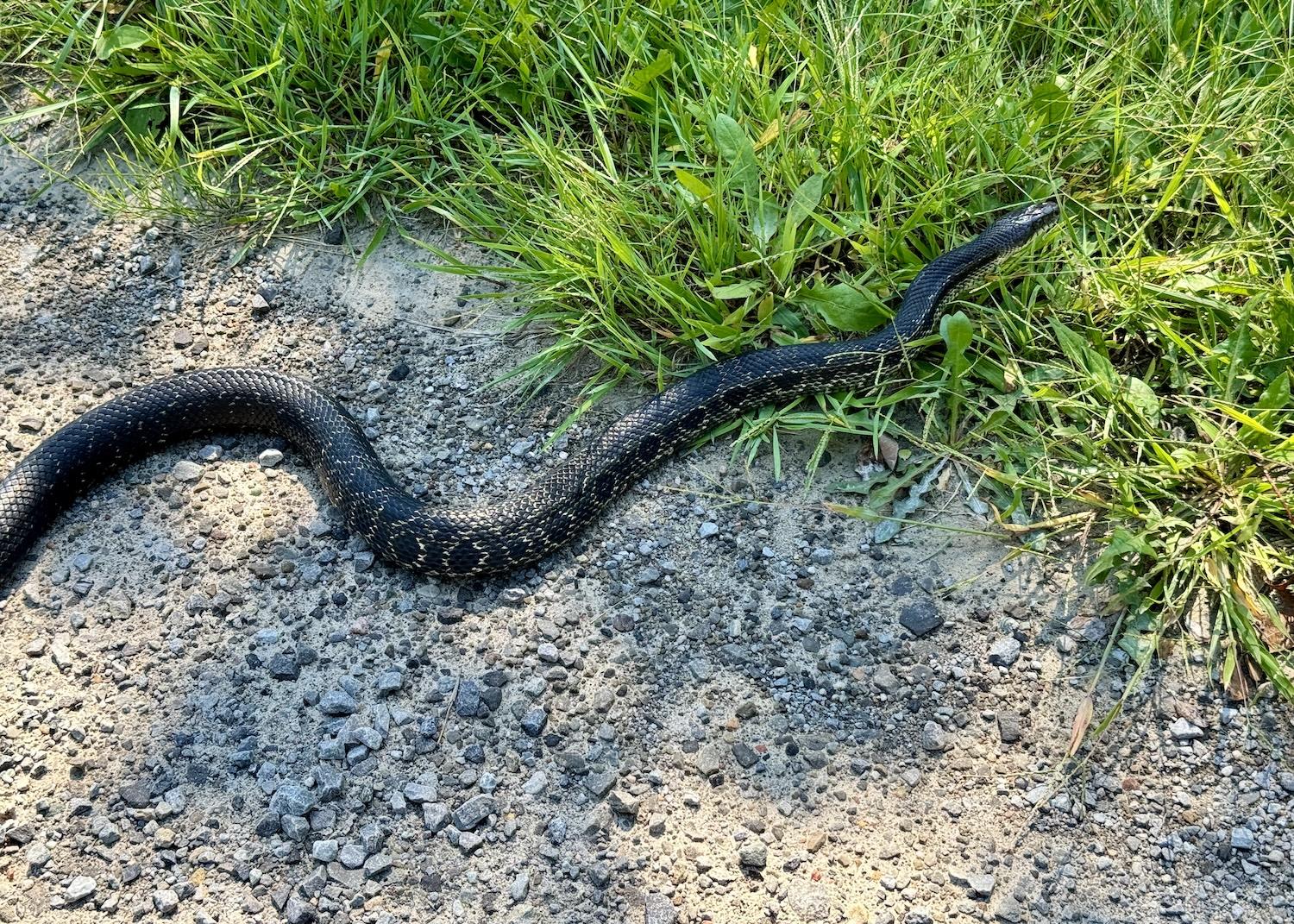
Near the Hill Island quarry, a threatened gray ratsnake thinks twice about crossing the road and takes cover in the grass/Jennifer Bain


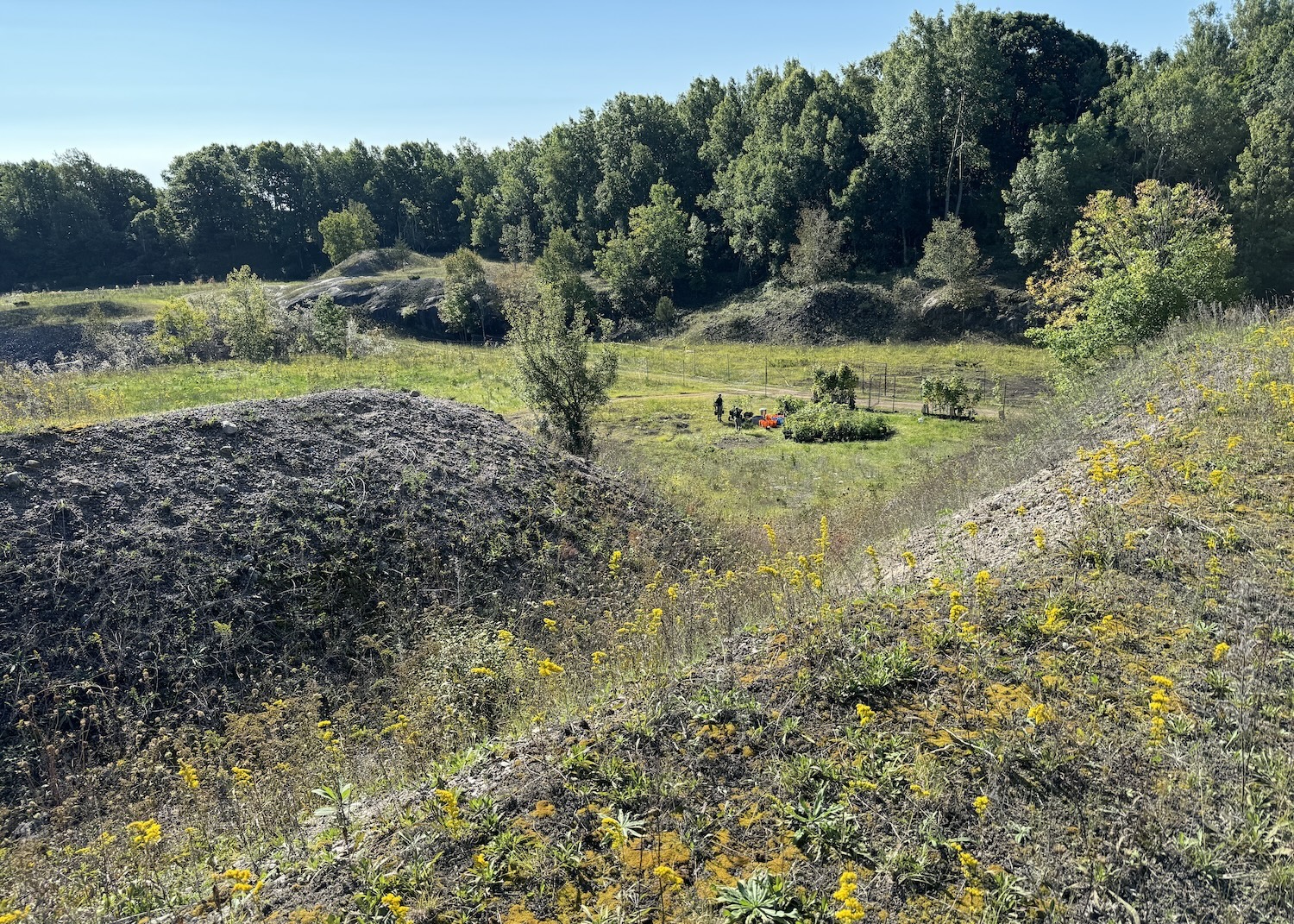
 Support Essential Coverage of Essential Places
Support Essential Coverage of Essential Places






